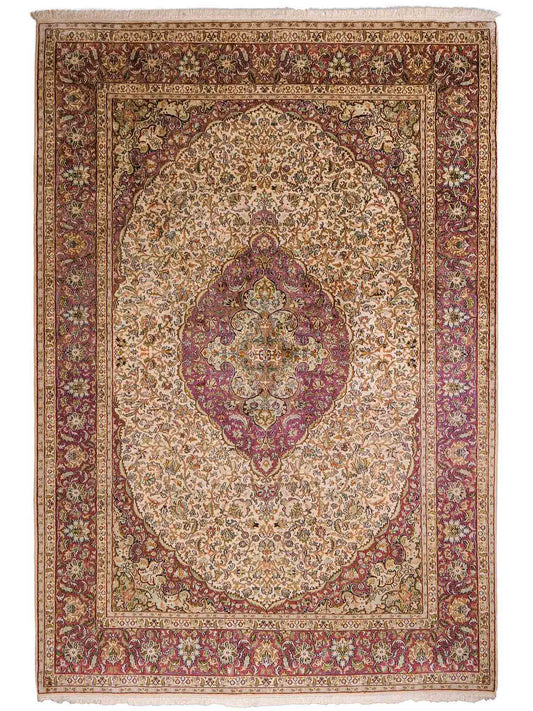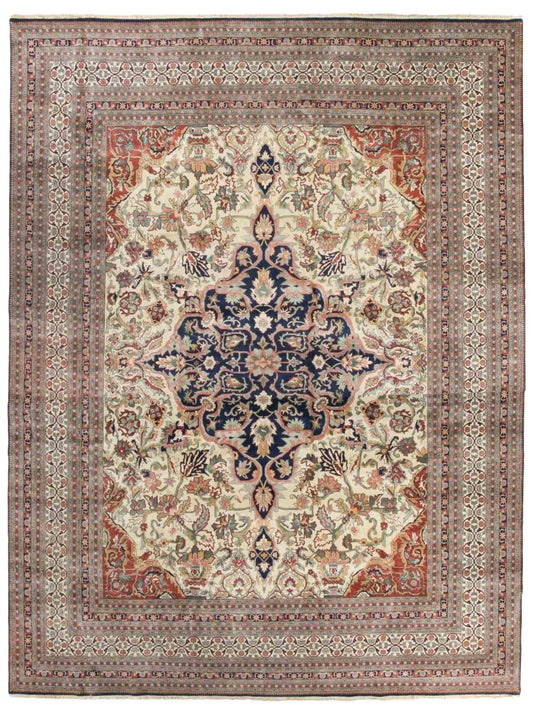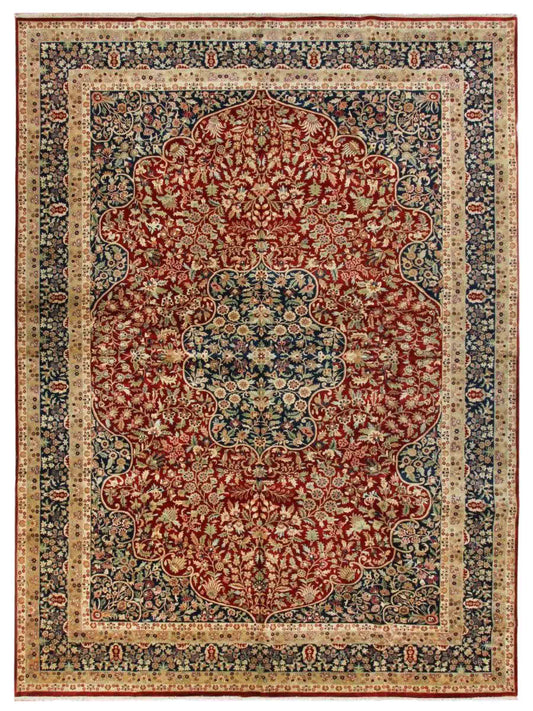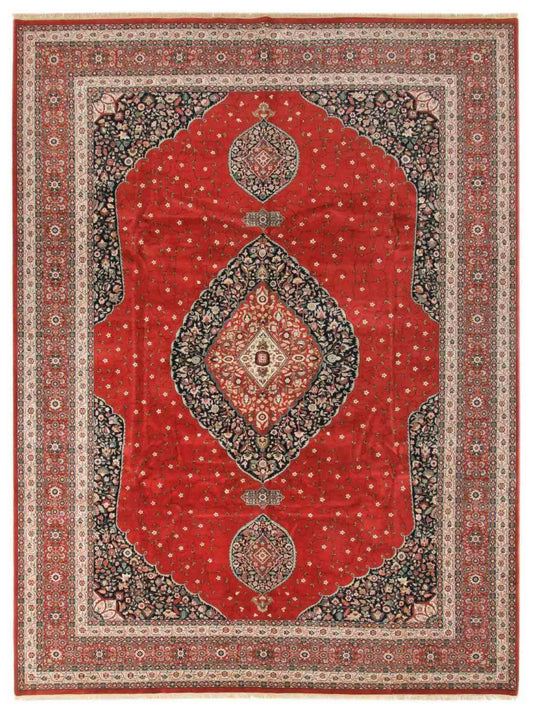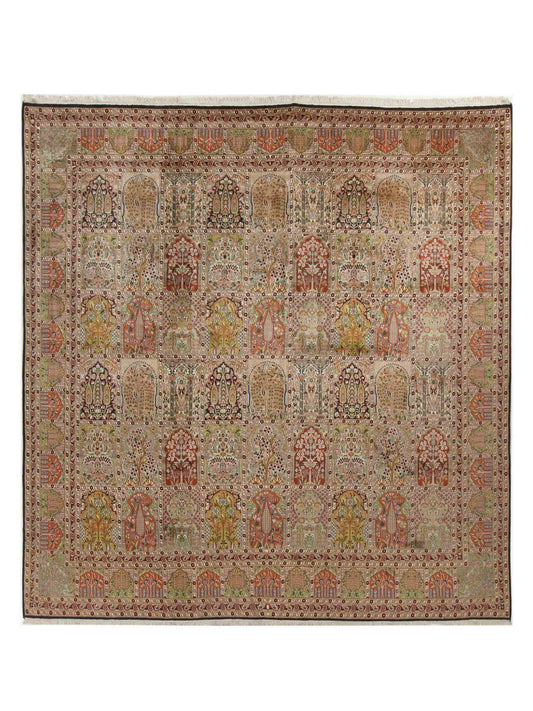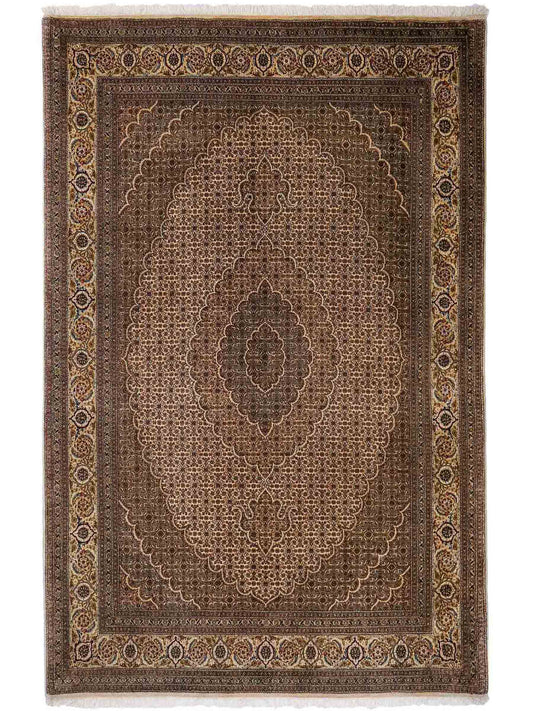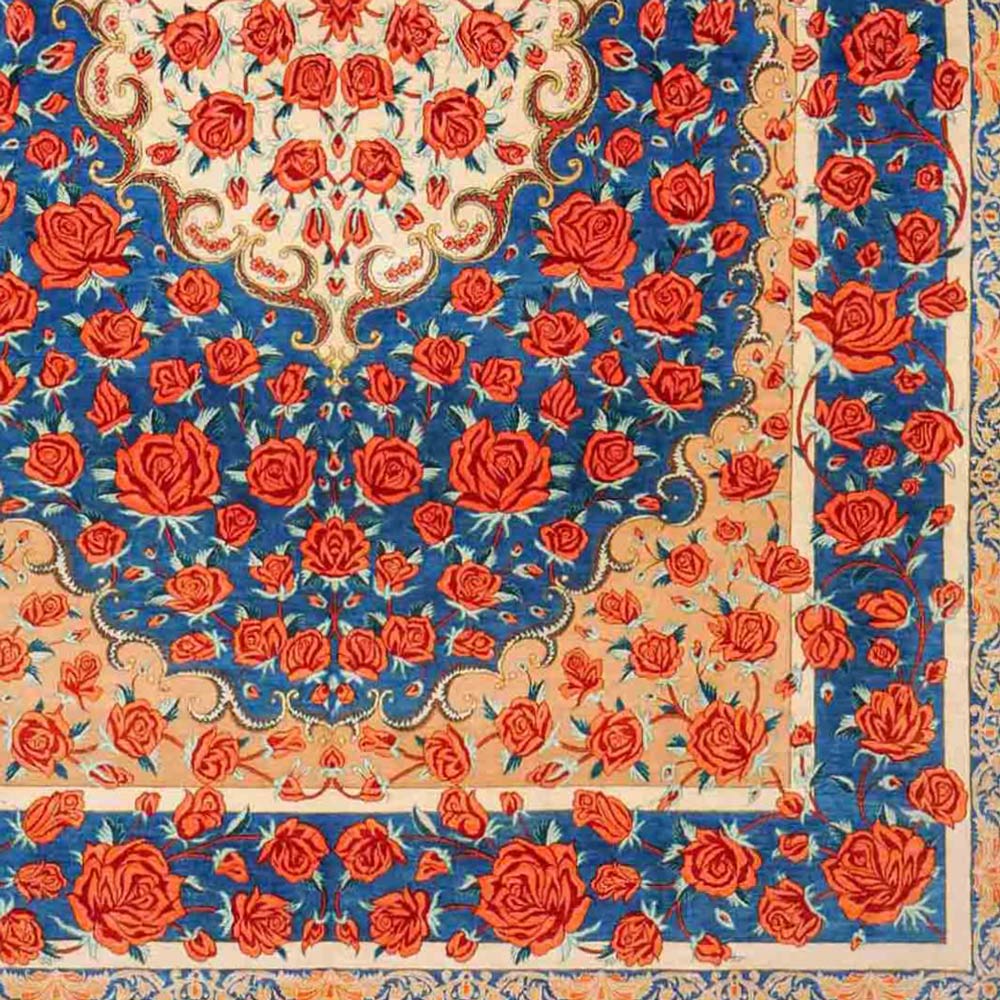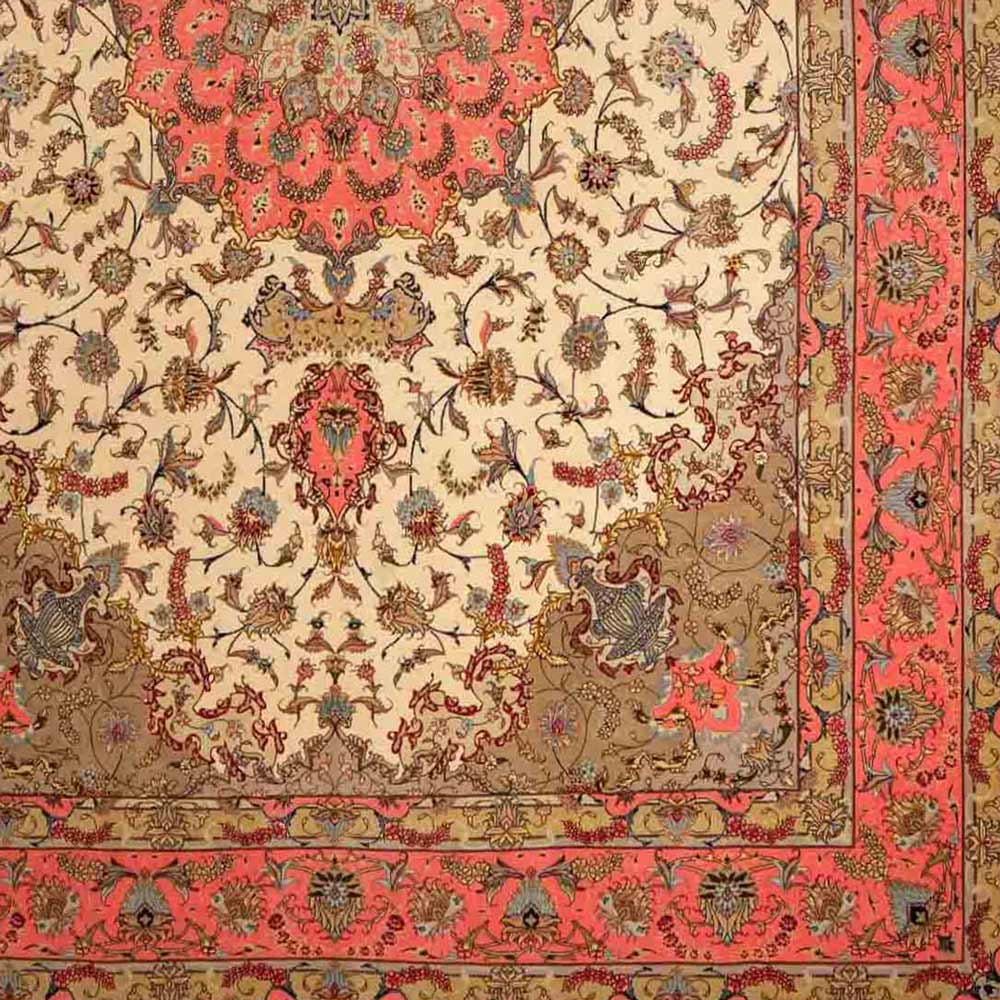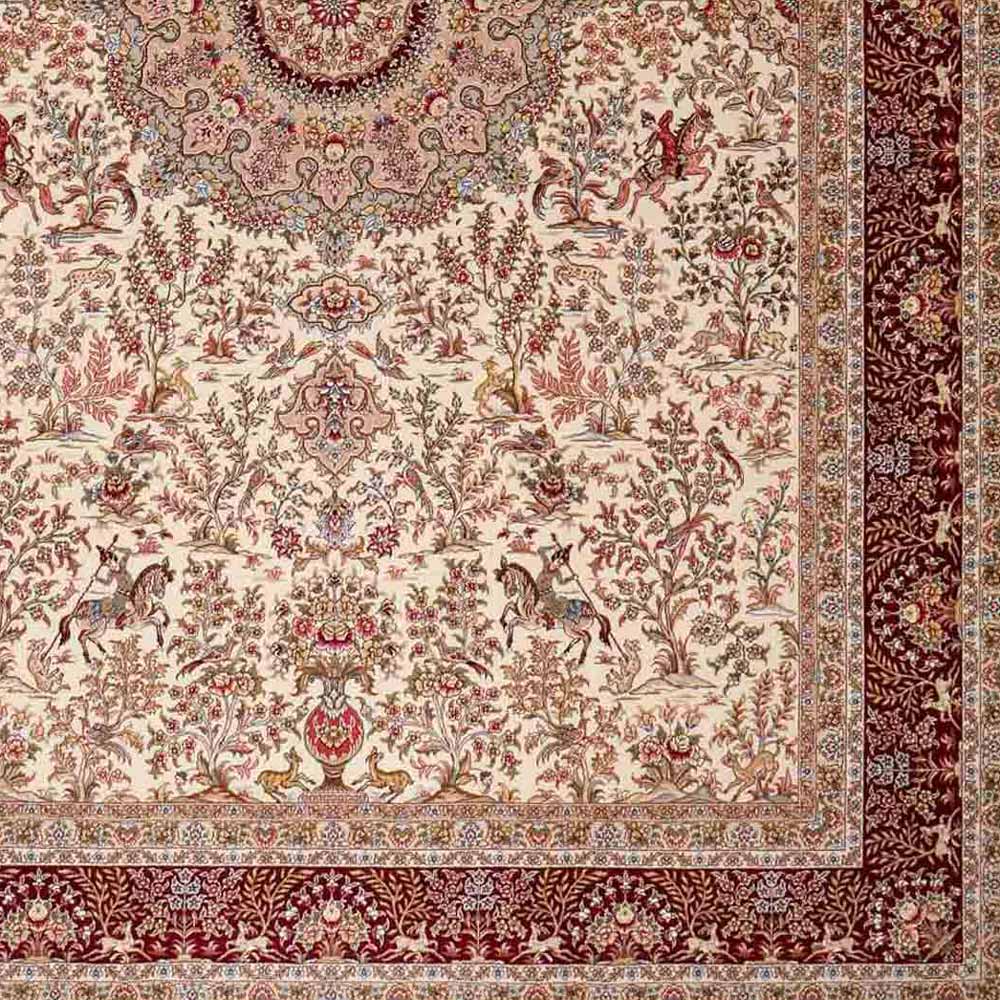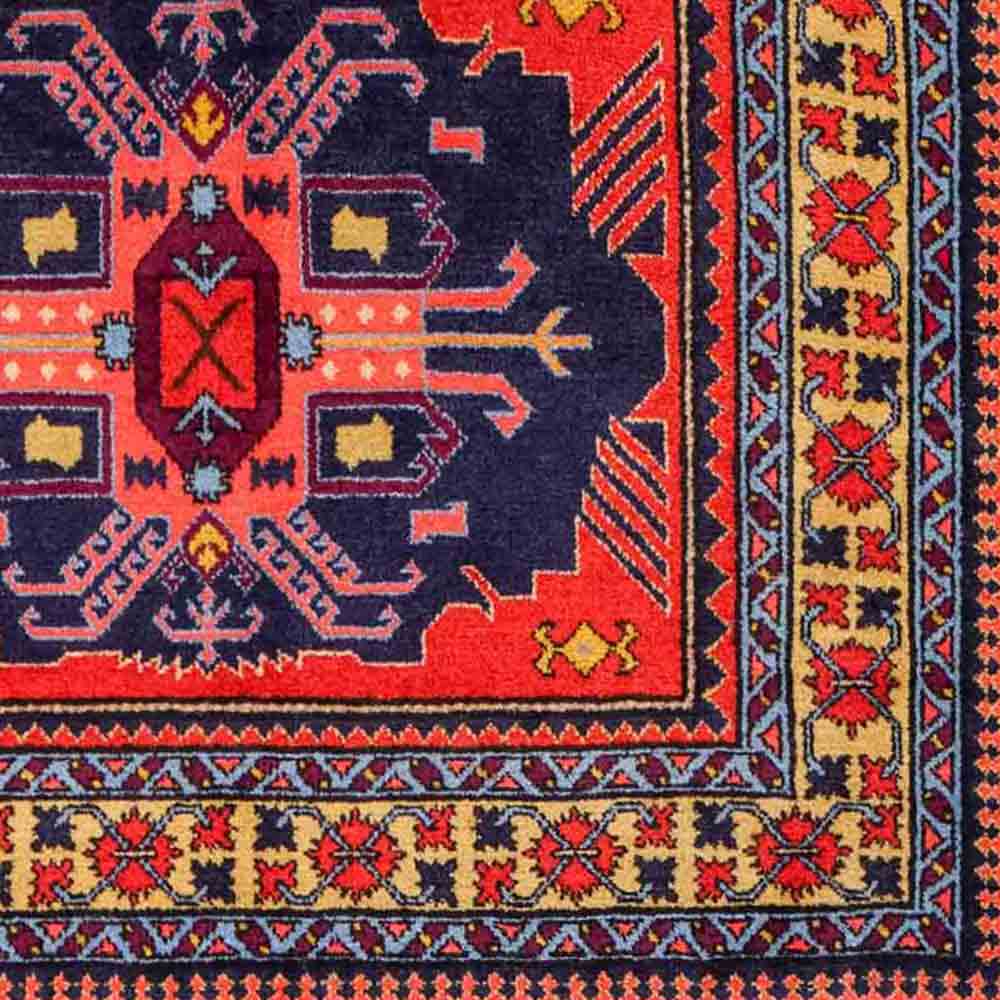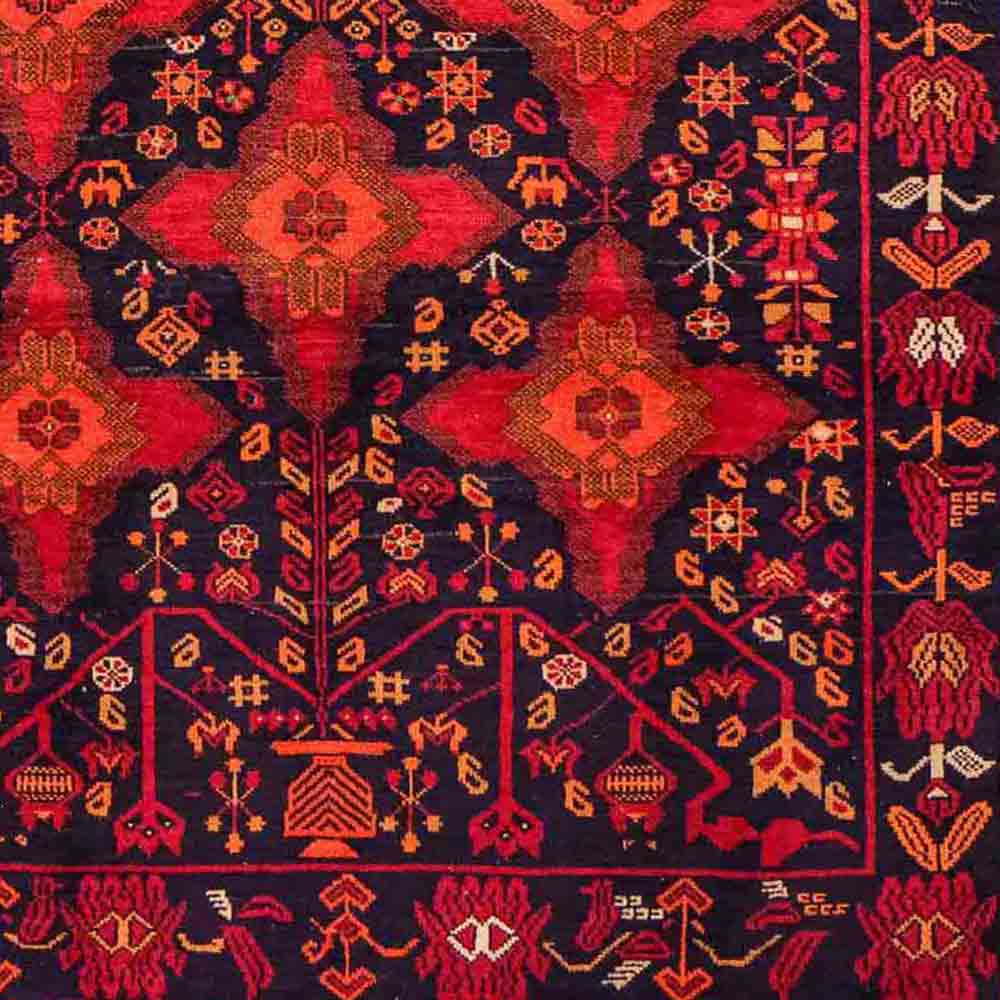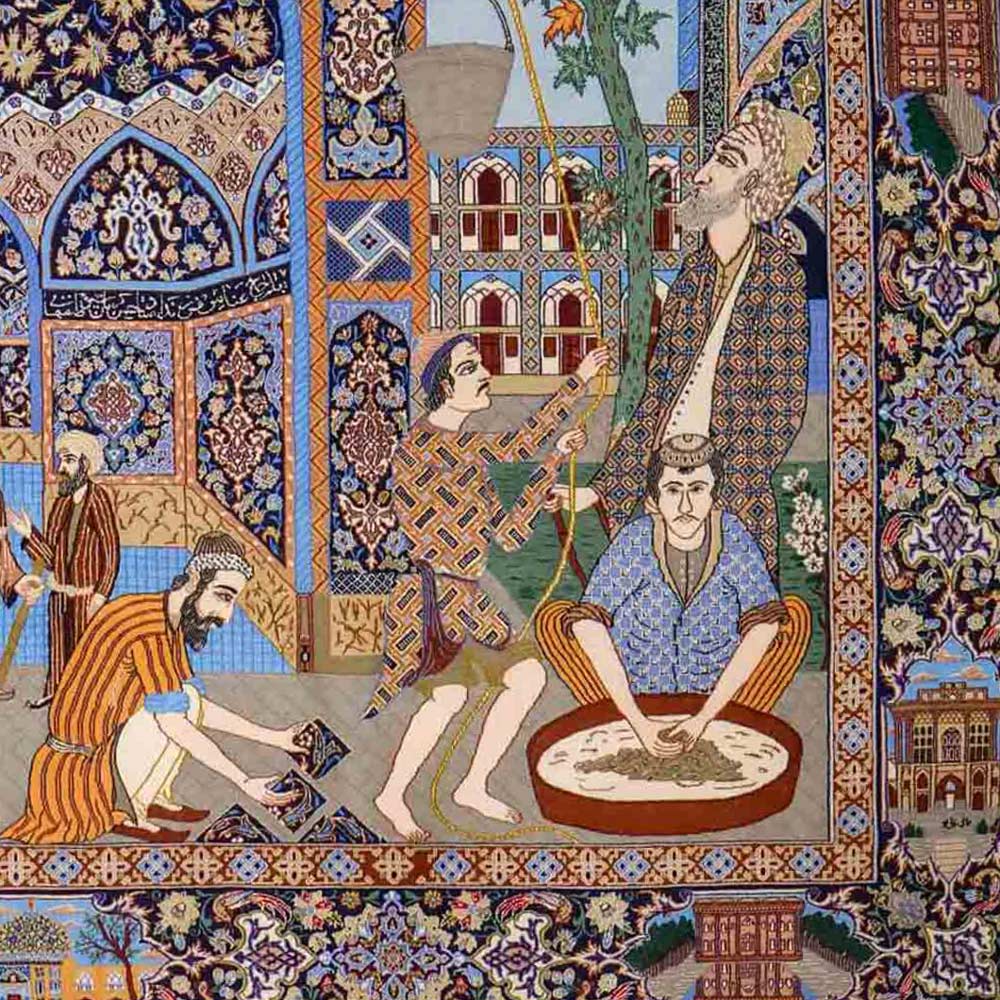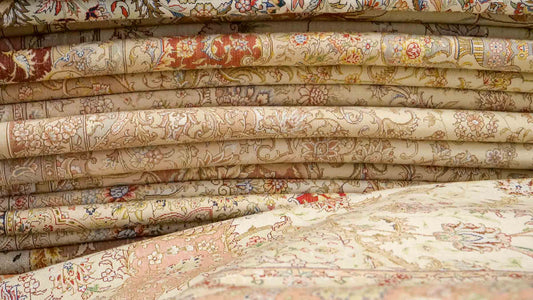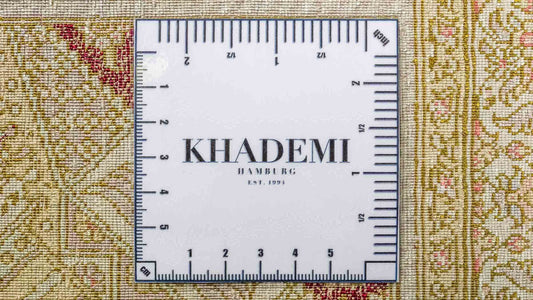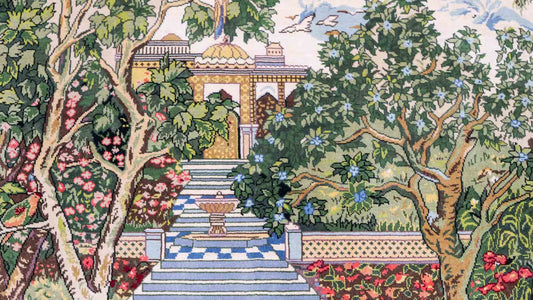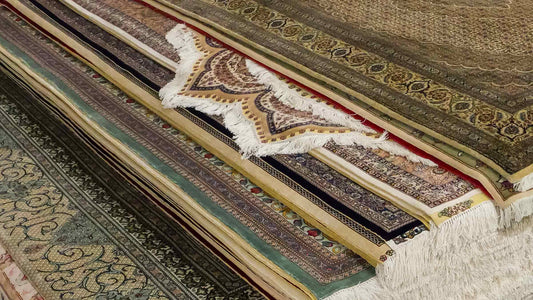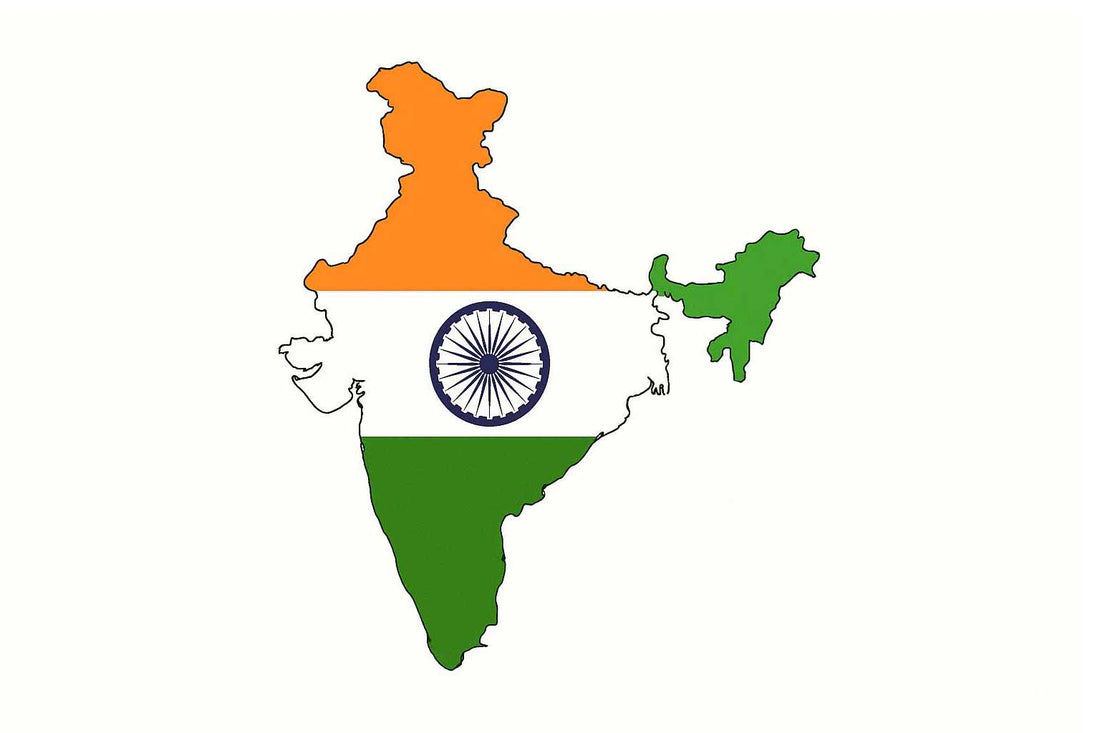
India: Color, Diversity and Tradition
Daniel KhademiIndian rugs are the embodiment of rich color, intricate craftsmanship, and cultural variety. From the delicate silk masterpieces of Kashmir to the sturdy wool rugs of Rajasthan—discover what sets Indian carpets apart and how they can elevate your interior with timeless elegance.
Indian Rugs: Everything Important at a Glance
- Handcrafted rugs from Kashmir, Rajasthan, Punjab, Uttar Pradesh, and Gujarat
- Impressive color variety—deep reds, blues, golds, and greens are prevalent
- Wide range of patterns, from floral/medallion to geometric & modern
- Materials: Premium wool, cotton, and shimmering silk
- Remarkable knotting artistry—up to 700,000 knots per m²
- Rich in cultural meaning: status symbol, gifts, and investment pieces
- Every rug tells the unique story and cultural heritage of its region
Discover Our Exclusive Indian Rugs – Explore the Full Collection Now!
The History and Significance of Indian Rugs
The art of Indian rug weaving dates back to the 16th century. Under the patronage of the Mughal emperors, rugs became a hallmark of royal palaces—often adorned with intricate patterns and symbols not only for their aesthetic beauty but also for their deeper meanings. The use of Persian-inspired symbols and arabesque motifs became hallmarks of this golden age of Indian carpet artistry.
Another crucial aspect lies in the worldwide influence of Indian carpets. Rug exports, especially during the British colonial era, helped spread Indian carpets across Europe and beyond. These exquisite textiles soon became a symbol of status and luxury, gracing refined homes throughout the West.
Today, Indian rugs remain significant in many aspects of life. They serve not only as beautiful decor and valuable investments, but also as treasured gifts for special occasions—carrying tradition and social significance. Indian carpets are an important part of weddings and cultural ceremonies, symbolizing continuity and connection across generations.
Patterns, Colors & Regional Variety of Indian Rugs
The designs of Indian rugs are remarkably diverse, ranging from floral or medallion motifs to geometric and even modern compositions. Colors are vibrant and varied, inspired by nature and local surroundings. It’s common to find designs featuring cultural or symbolic elements which tell stories from mythology or religious tradition. Each region has developed its own palette and design language:
- Kashmir: Exquisite silk carpets with delicate designs, often blending floral, geometric, and the traditional "Butti" (small leaf) motif
- Rajasthan & Punjab: Bold, expressive patterns with lively scenes from daily life and nature
- Uttar Pradesh: Rugs with high knot density, intricate floral motifs, and refined color schemes
- Gujarat: Rustic, nomadic mountain rugs, often reflecting local storytelling through traditional weaving
Rug Materials and Indian Weaving Art
Material quality is key to the character and longevity of an Indian rug. The most common materials are:
- Wool: The primary material, valued for its durability and warmth. Indian wool is often specially washed and dyed to achieve vivid colors and lasting quality
- Cotton: Frequently used for affordable rugs and as warp threads, providing softness and structural stability.
- Silk: Pure silk or silk blends offer a luxurious shine, exceptional detail, and unmatched softness—but are also more delicate and prized.
Knotting techniques and weave density vary across regions and styles. Knot count is a central quality and value indicator:
- Premium rugs: Boast between 200,000 and 700,000 knots per m², with outstanding durability and intricate patterns—a true mark of master craftsmanship.
- Value rugs: Usually range from 100,000 to 200,000 knots per m²; less detailed but a great price-quality balance for many buyers.
The complexity and time required are immense—experienced artisans may spend months completing a single high-quality rug, adding to their unique value.
Major Indian Rug Provinces
The most important regions for rug production in India are:
| Region | Signature Features |
Colors & Designs | Highlights / Specialties |
| Kashmir | Pure silk, intricate patterns | Pastels, cream, red | "Butti", floral & medallion motifs |
| Rajasthan | Vibrant, robust | Red, yellow, blue | Wool rugs, folkloric designs |
| Punjab | Durable, eye-catching |
Bold, strong tones | Wool rugs, everyday life motifs |
| Uttar Pradesh | Fine, highly detailed | Versatile, floral | High knot count, elegant motifs |
| Gujarat | Rustic, nomadic | Earth tones, orange | Nomadic rugs, traditional hand-weaving |
Care & Value Retention of Indian Rugs
Hand-knotted rugs from India are extremely durable when properly maintained—and remain enduringly popular as investments.
Care Tips:
- Avoid direct sunlight
- Use mild cleaning products only
- Rotate your rug regularly
For more detailed advice, visit our blog post: *How to Care for Hand-knotted Rugs*.
If you are interested in purchasing an indian rug, we recommend requesting an expert appraisal and reading our article: *Are Hand-Knotted Rugs a Good Investment?*
Checklist: How to Identify a High-Quality Indian Rug
- Handmade: Look for subtle irregularities—hallmarks of genuine craftsmanship.
- Material Quality: Always opt for pure wool, cotton, or silk—avoid synthetic fibers.
- Knot Density: The higher the knots per square meter (at least 100,000; top quality 200,000+), the finer and more valuable the rug.
- Well-Defined Patterns: Floral, geometric, or medallion motifs should be sharp and precise.
- Rich, Natural Colors: Colors should be vibrant, colorfast, and never artificially shiny.
- Back Inspection: The design should be as clear on the back as on the front.
- Certificate of Authenticity: Trusted dealers place great emphasis on transparency regarding origin and craftsmanship. With us, you will always receive a Certificate of Authenticity for every hand-knotted, hand-tufted, and handwoven rug.
- Soft Yet Robust Feel: The rug feels pleasant and sturdy, with no matting or fraying.
- Regional Characteristics: Look for design signatures reflecting the origin (e.g., Kashmir, Rajasthan, etc.).
- Expert Advice: When in doubt, consult certified rug experts or professional dealers.
FAQ – Frequently Asked Questions About Indian Rugs
What makes Indian rugs special?
► The unique blend of artisanal tradition, diverse patterns, and intense colors.
Why are Kashmir rugs so sought after?
► They unite the finest silk, elegant motifs, and world-class artistry—true icons of luxury.
How do I recognize a high-quality Indian rug?
► Look for high knot density, detailed patterns, and natural materials. Our experts are always here to advise you!
How do I care for an Indian rug?
► Gentle cleaning, protection from direct sunlight, and regular rotation. For details, see our Rug Care Guide.
Conclusion
Indian rugs are vibrant expressions of a rich history and culture. With their extensive range of designs and premium materials, expertly woven by master craftspeople, they represent an art form that deserves celebration. An Indian rug brings authentic tradition to your home—a timeless heirloom that tells the stories of generations.
Want to learn more? Discover our related blog articles → Design Classics, Countries of Origin, Carpet Materials, Carpet Guide

